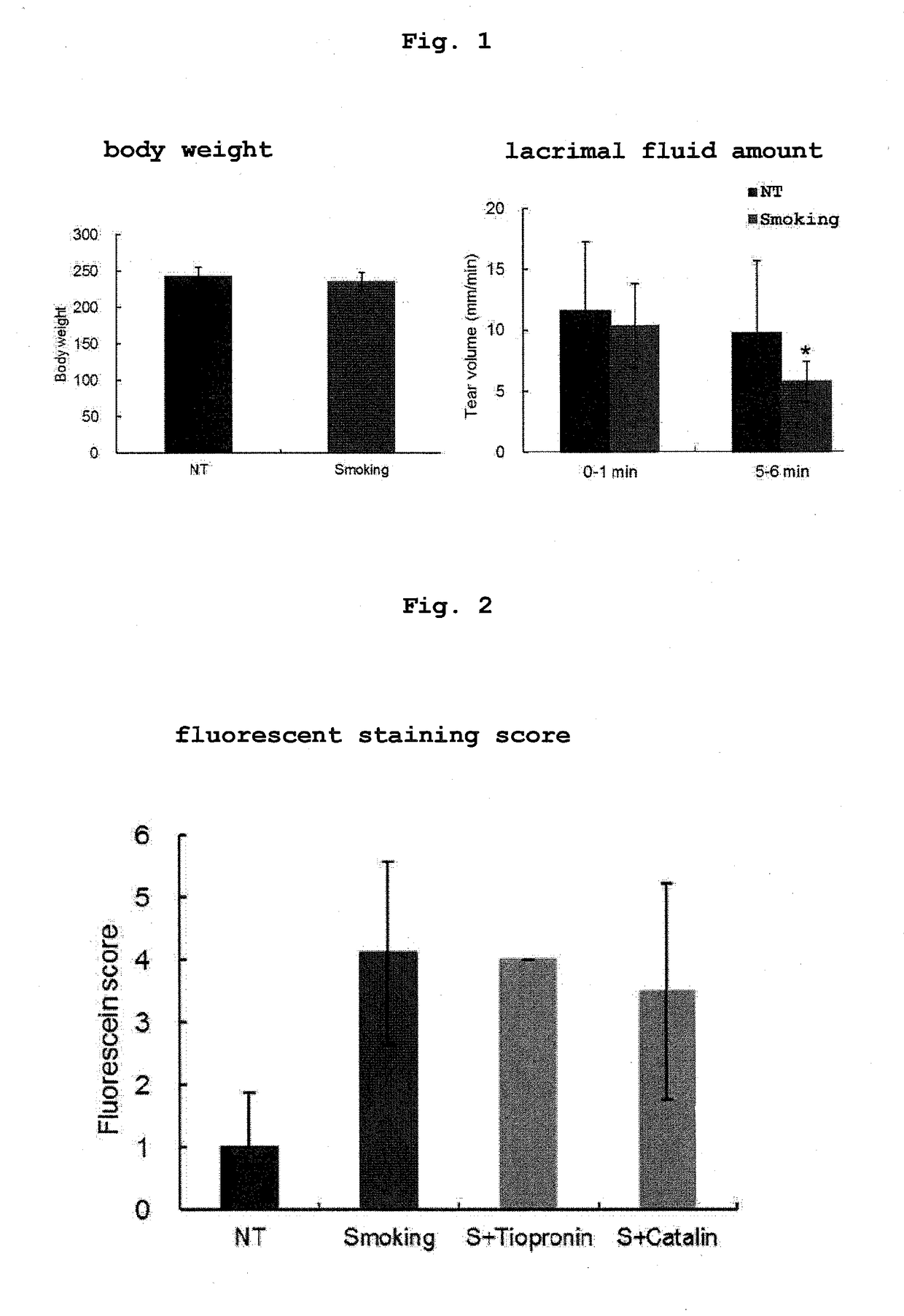Phacosclerosis inhibitor
a phacosclerosis and inhibitor technology, applied in the direction of drug compositions, pharmaceutical delivery mechanisms, medical preparations, etc., can solve the problems of ophthalmic diseases, presbyopia, and inability to adjust the thickness of the crystalline lens well
- Summary
- Abstract
- Description
- Claims
- Application Information
AI Technical Summary
Benefits of technology
Problems solved by technology
Method used
Image
Examples
example 1
Smoking Treatment by Exposure to Mainstream Smoke
[0074]Male 6-8-week-old Sprague-Dawley (SD) rats were divided into 4 groups, each group with 4 rats, and they were used as a nonsmoking treatment group (NT), a smoking treatment group (Smoking), a smoking treatment+0.1% tiopronin instillation group (S+0.1% Tiopronin), and a smoking treatment +0.005% pirenoxine instillation group (S+Catalin).
[0075]Tiopronin (Thiola Tab. 100, manufactured by Mylan EPD) was prepared to provide an active ingredient amount of 0.1 w / v %, whereby an ophthalmic solution was produced. Catalin For Ophthalmic 0.005% (manufactured by Senju Pharmaceutical Co., Ltd.) was used for the 0.005% pirenoxine instillation group. Each eye was instilled with 5 μL per instillation. Instillation was performed for 12 days, once before the following smoking treatment and 3 times after the treatment.
[0076]The smoking treatment was performed as follows by reference to the method of Higuchi et al. (Free Radic. Biol. Med., 2011, Vol...
example 2
Measurement of Crystalline Lens Hardness After Smoking Treatment
[0077]The crystalline lens isolated from the eyeball in Example 1 was measured for the crystalline lens hardness by the following method. The hardness of the crystalline lens was measured using an electron balance and a height gauge in combination. A crystalline lens previously measured for the length of the minor axis was placed on the electron balance, and the weight was set to 0. The handle of the height gauge was operated from above the crystalline lens and the tip portion thereof was set in contact with the crystalline lens. Furthermore, the handle was operated and the tip was lowered by about 5-10% of the length of the minor axis to pressurize the crystalline lens. The changes in the weight at this time were measured by the electron balance, and the weight was divided by the distance shown on the height gauge and taken as hardness. A larger value means higher hardness. The statistical processing of the hardness of...
PUM
 Login to View More
Login to View More Abstract
Description
Claims
Application Information
 Login to View More
Login to View More - R&D
- Intellectual Property
- Life Sciences
- Materials
- Tech Scout
- Unparalleled Data Quality
- Higher Quality Content
- 60% Fewer Hallucinations
Browse by: Latest US Patents, China's latest patents, Technical Efficacy Thesaurus, Application Domain, Technology Topic, Popular Technical Reports.
© 2025 PatSnap. All rights reserved.Legal|Privacy policy|Modern Slavery Act Transparency Statement|Sitemap|About US| Contact US: help@patsnap.com



